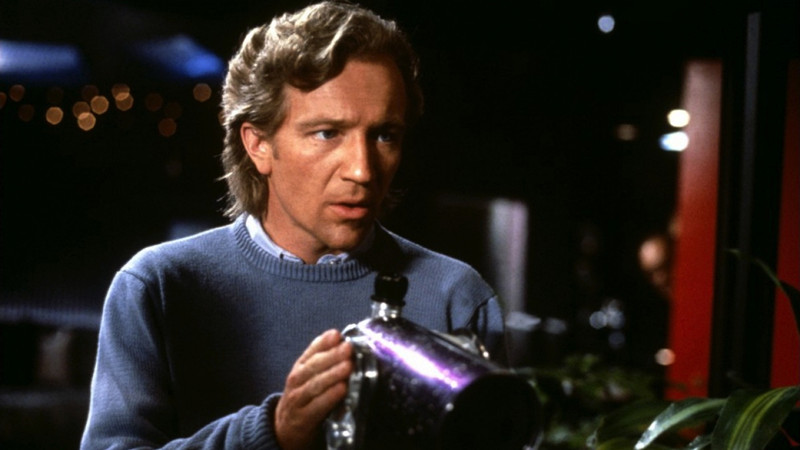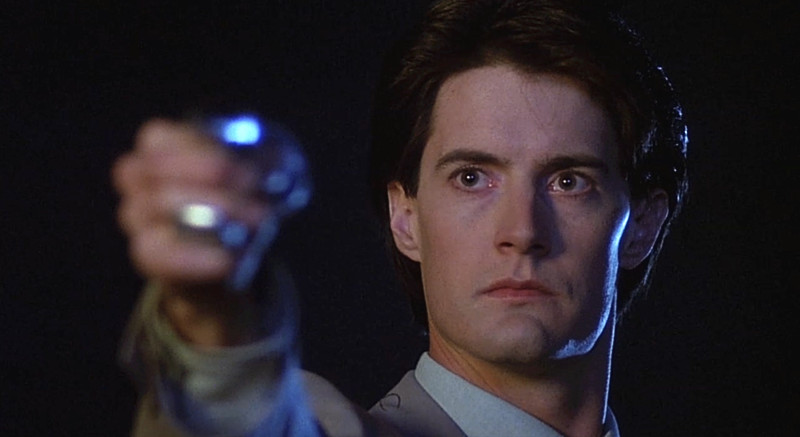
During the 1970s, Hollywood took chances on auteurs to produce artistic epics. However, after the cataclysmic, over-budget disaster of Michael Cimino’s Heaven’s Gate (1980), this era came to an abrupt close. Studios reduced directors’ sway, focusing more on commerce, through blockbusters like E.T. (1982) and franchises like Ghostbusters (1984).
That said, this new cinematic landscape did little to stifle cinematic creativity. During the 1980s, directors including David Cronenberg, Lucio Fulci, the Coen Brothers and John Woo emerged as fresh, exciting artists to watch. This list will explore ten 1980s classics that are worth the time of cinephiles.
1. The Fog (1980)

Ghosts surface from the ocean to take revenge upon the town of Antonio Bay.
A prominent strength of The Fog is director John Carpenter’s signature stylisation, assisted DP Dean Cundey’s atmospheric photography. Whereas most zombie movies retread old territory, Carpenter delivers a fresh take on the sub-genre. Similarly, many horror movies serve as mere entertainment. Reflecting Carpenter’s writing talent, The Fog’s message is communicated in its backstory. A hundred years before the film’s events, a leper colony ship was deliberately wrecked. The gold plundered from the ship was used to build the town of Antonio Bay.
This detail transforms The Fog from a simple horror movie, giving emotional charge to the events and provoking thoughtful debate. Jamie Lee Curtis, in her second collaboration with Carpenter, after Halloween (1978), confidently leads the production. Meanwhile, Adrienne Barbeau’s radio announcements stitch together the movie’s episodic character profiles. In addition, unlike the majority of early-‘80s horrors, The Fog is creepy rather than gory, cultivating a chillingly eerie tone.
2. Where the Buffalo Roam (1980)

An adaptation of writer Hunter S. Thompson’s Rolling Stone Magazine articles. Some of the source material includes: Fear and Loathing on the Campaign Trail ’72 (1973) and The Great Shark Hunt (1979).
Before shooting, Bill Murray lived and became friends with Hunter S. Thompson. Their exploits included Thompson tying Murray to a chair and throwing him in a swimming pool, seeing if he could escape. Murray went so far as to say: “I took on another persona and that was tough to shake. I still have Hunter in me.” Due to this research, Murray’s portrayal is far more accurate and comedic than Johnny Depp’s in Fear and Loathing in Las Vegas (1998). Murray captures the infamous writer’s nonchalant debauchery and unique perspective.
Meanwhile, he forges excellent comedic chemistry with Peter Boyle, who plays Thompson’s disappeared sidekick: Carl Lazlo. Using a picaresque ‘storyline,’ Where the Buffalo Roam is informed by Thompson’s political concerns and opinions. By tackling the persecution of the hippies and Richard Nixon’s corruption, like Thompson himself, the movie serves as a countercultural protest. Importantly, it distills Thompson’s gonzo spirit and what he stood for ideologically. Where the Buffalo Roam was scored by Neil Young and directed by Art Linson. Linson would go on to enjoy a career as a producer, bringing titles like Fight Club (1999) and Sons of Anarchy (2008-2014) into fruition.
3. Southern Comfort (1981)

Whilst training in the Louisiana Bayou, the National Guard antagonise the local Cajuns, leading to a cat and mouse chase.
Firstly, Deliverance-inspired Southern Comfort is a classic of the action and survival genres, one of auteur Walter Hill’s best movies. Andrew Laszlo’s cinematography evokes the haunting beauty of the Louisiana bayou, as does Ry Cooder’s slide guitar score. Uniquely, Southern Comfort captures Cajun culture, which has been underrepresented in film. Hill revels in depicting the Cajuns’ parties, cooking, accordion music and spirit of “laissez les bons temps rouler.”
Additionally, proficient character actor Brion James (Blade Runner) delivers one of the only convincing on-screen Cajun accents. Critics have drawn parallels with Southern Comfort and the Vietnam War. Crucially, Southern Comfort depicts both sides of the fight with sympathy, exposing the futility and needless suffering of war. Walter Hill commented: “none of us are quite as good or bad as we construct them.”
4. Liquid Sky (1982)

An alien invader infiltrates New York’s New Wave subculture.
Liquid Sky is worth watching for its stunning aesthetic alone, approaching the sci-fi genre like video art. It is iconoclastic of the 1980s’ garish, androgynous fashion, youth culture and music. Its psychedelic style is achieved through its saturated neon lighting, colourful makeup, synth score and the use of thermal imaging. The unnerving surrealist tone is heightened by the emotionally distant, arrogant, vain characters.
Visually, it has been an inspiration for director Nicolas Winding Refn, who dubbed it “a counterculture film. I love [it]. It’s probably the most accurate movie version of what it was like clubbing in New York at that period. A historical throwback to an era that’s certainly no longer there. It’s a bit like seeing some British film about Swinging London. It’s very unique. It’s a movie I think about a lot.”
5. The Dead Zone (1983)

When he awakens from a five-year coma, Johnny Smith (Christopher Walken) discovers that he has psychic abilities.
The Dead Zone is the perfect marriage between Stephen King’s original writing and David Cronenberg’s direction. The latter’s craft is taut, focused and envelope-pushing, achieving a greater degree of relatable drama and tragedy than his earlier body horrors. This melancholy is expertly articulated by Christopher Walken, who, unusually, does not imbue his performance with humour and cheekiness.
Instead, he excels as a serious, grounded leading man, winning the audience’s pathos. By virtue of Stephen King’s vision, The Dead Zone unsettlingly mixes ordinary domesticity with the untamed malice of the supernatural. It is regarded as perhaps the finest adaptation of the writer’s work. What is more, through Martin Sheen’s diabolical performance, The Dead Zone’s political themes are even more relevant today than they were upon its release.
6. Sleepaway Camp (1983)

Angela Baker (Felissa Rose) is bullied at summer camp. One-by-one, her abusers are violently murdered.
In the early-1980s, cinema was inundated with similar slasher movies. Sleepaway Camp proves to be one of the genre’s standout pieces, due to its substance. Akin to Friday the 13th (1980), Sleepaway Camp addresses bullying and its upsetting ramifications. Its effect provokes introspection in the audience, forcing them to evaluate how they treat others and experience first-hand the long-lasting effects of abuse. At its climax, Sleepaway Camp contains one of film history’s most shocking twists, outdoing the work of M. Night Shyamalan.
7. Body Double (1984)

After witnessing a woman being abused through a telescope, actor Jake Scully (Craig Wasson) becomes embroiled in a murder case.
Body Double is comprised of epic, dreamlike, Hitchcock-inspired set pieces. Ambitious scenes such as when Jake spies on Gloria in a department store echo Rear Window (1954) and Vertigo (1958). These themes of voyeurism and the male gaze are exacerbated by the recurrence of telescopes, cameras and mirrors. However, whilst paying homage to his hero, De Palma subverts the audience’s expectations of a thriller, such as in the infamous drill through the ceiling scene. Body Double is a movie that is deliberately self-conscious of cinema’s artifice, examining appearance and reality.
Its most revolutionary scene is a single take tracking shot, to the song Relax by Frankie Goes to Hollywood, condensing 1980s fashion. It is a mise en abyme, where the emotions of the porno being shot matches the plot of the movie surrounding it, blurring reality. De Palma playfully toys with metatextuality, showing the camera in a mirror, ultimately offering a satire and critique of Hollywood. Furthermore, De Palma’s treatment of cinema’s superficiality would prove to be influential upon his most famous student: Quentin Tarantino.
8. The Hidden (1987)

In Los Angeles, an alien inhabits different human bodies to embark upon a crime spree.
With a strong, interesting premise, The Hidden remains one of the 1980s most underrated hidden gems. One of its assets is its originality, excelling in both the buddy cop and sci-fi genres. Unlike hard sci-fi, like the world-building of Star Wars (1977), The Hidden is ‘sci-fi lite,’ incorporating supernatural elements in a realistic, Earth-bound setting. The crisp direction and editing facilitates its stylish visuals and exhilarating action sequences.
These include: bank robberies, car chases, shootouts, flamethrowers, and bazookas, executed with pristine stunts. Earlier in the 1980s, the slew of slasher movies proved to be all too similar in plotting. The Hidden upends the slasher, making it more interesting and mysterious, by the killer having the ability to inhabit different bodies. Clearly cast for his work with David Lynch, Kyle MacLachlan’s performance expresses the movie’s tongue-in-cheek humour, foreshadowing his work in Twin Peaks (1990-1991).
9. Bird (1988)

A biopic of seminal bebop saxophonist Charlie Parker (Forest Whitaker).
The best thing about any Forest Whitaker movie is his masterclass acting. Bird is the ideal platform for Whitaker’s immense talent. His impassioned, breakout turn as Charlie Parker is brimming with intensity, tragedy, personality, sincerity and volatility. Whitaker deservedly received Cannes’ Best Actor Award for his work. Bird is further enhanced by Clint Eastwood’s direction.
With a tone of hopeless romance, Eastwood crafts period mise-en-scène and atmospheric noir lighting, underscoring the protagonist’s emotional experience. On one hand, Bird is an inspiring biopic, yet on the other, it is a cautionary tale about drug use and squandered talent. It is particularly recommendable to jazz fans, yet its value makes it enjoyable for those unfamiliar with the musical genre.
10. Who’s Harry Crumb? (1989)

Idiotic private detective Harry Crumb (John Candy) must solve the case of a missing daughter.
Although Who’s Harry Crumb? garnered negative reviews, it is worth watching for the legendary John Candy’s lead performance. Across his filmography, Candy not only made audiences laugh, but uplifted them with his warmhearted, loveable personality. In Who’s Harry Crumb?, his comedic talent is permitted to shine, through the dissonance between Crumb’s confidence and the reality of his clumsy mishaps.
As well as utilising slapstick, Candy delivers consistently hilarious one-liners. For instance, Crumb and a little girl view a large photograph of the missing daughter. The little girl says: “she’s perfect,” to which Crumb replies: “perfect? Yeah, I dunno. I mean, look at the size of her head. She must be enormous.”

Leave a Reply